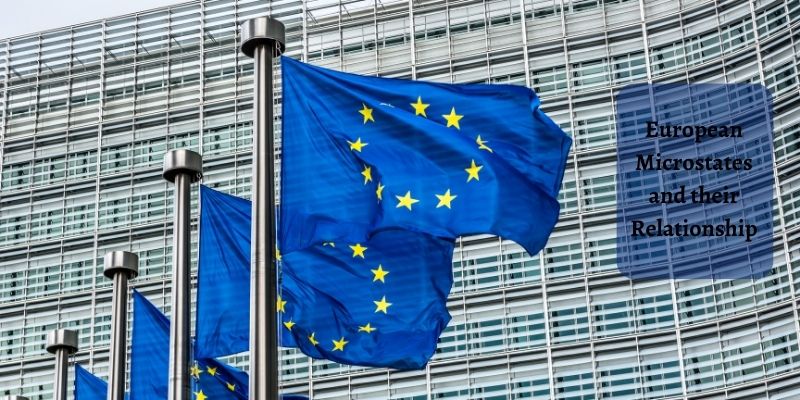- News >
- Non-EU Microstate Citizens Exempt from ETIAS Requirement
Non-EU Microstate Citizens Exempt from ETIAS Requirement

Starting from 2021, the European Travel Information and Authorization System (ETIAS) will be implemented to enhance security within the Schengen Zone—a region consisting of 22 European Union (EU) countries and four European Free Trade Association (EFTA) member states. While most nationalities currently enjoy visa-free travel within the Schengen member states, they will soon be required to apply for ETIAS. However, citizens of four European microstates—Andorra, Monaco, San Marino, and Vatican City—will be exempt from this new travel authorization requirement.
Freedom of Movement
Andorra, Monaco, San Marino, and Vatican City, known as microstates, currently benefit from freedom of movement within the Schengen Area. This open border region allows citizens of these microstates to travel seamlessly between 22 EU countries and the four EFTA member states (Iceland, Liechtenstein, Norway, and Switzerland).
ETIAS Implementation
To bolster security measures, the Schengen Area will introduce the European Travel Information and Authorization System (ETIAS) in 2021. ETIAS will require most nationalities, who currently enjoy visa-free travel within the Schengen member states, to obtain travel authorization to continue visiting the region.
Exemption for Four Microstates
Despite the upcoming ETIAS requirement, citizens of Andorra, Monaco, San Marino, and Vatican City will be exempted from this new travel authorization system. These individuals will retain their freedom of movement within the Schengen Area without the need to apply for ETIAS.
In summary, citizens of Andorra, Monaco, San Marino, and Vatican City will not be included in the list of countries whose nationals must register with the new ETIAS travel authorization system to visit the majority of European countries. They will continue to enjoy unrestricted travel within the Schengen Area.
European Microstates and their Relationship with the Schengen Area
Until recently, there has been speculation regarding the travel requirements for nationals of Andorra, Monaco, San Marino, and Vatican City when the ETIAS system is introduced in 2021.
Open Borders with Schengen Neighbors
Although these microstates are not official members of the European Union or the Schengen Area, they have open borders with their Schengen neighbors.
De Facto Part of the Schengen Zone
This arrangement effectively makes them part of the Schengen Zone in practice. Residents of the microstates, as well as residents and visitors to the Schengen Area, can freely travel across these borders without any restrictions.
No ETIAS Requirement
Initial concerns about implementing border controls and requiring citizens of these microstates to obtain ETIAS visas to leave were met with controversy. However, the latest information from the Europe Direct Contact Center indicates that nationals of all four microstates will not be affected by ETIAS. They will continue to enjoy unrestricted travel throughout Europe.
In summary, the nationals of Andorra, Monaco, San Marino, and Vatican City will not be required to register with ETIAS or face any travel restrictions within Europe.
What are European Microstates?
Microstates are fully independent sovereign countries that consist of a very small land area and/or population. Europe is home to several microstates, each with varying relationships to neighboring countries and organizations like the EU.
Closely Connected to Neighboring Countries
Some microstates are closely connected to neighboring countries, which may assume responsibilities such as military protection for the microstate. However, unlike a territory of a larger country, this relationship is voluntary, and the microstate retains its sovereign control.
List of Microstates in Europe
There are six small countries considered microstates in Europe. These microstates are:
- Andorra
- Liechtenstein
- Malta
- Monaco
- San Marino
- Vatican City
Membership in the European Schengen Area
Among these microstates, only two, namely Malta and Liechtenstein, are officially part of the European Schengen Area. The Schengen Area is an agreement among European countries to abolish passport controls and allow free movement of people within the area.
In summary, Europe is home to several microstates, which are fully independent countries despite their small size. Some microstates have close connections to neighboring countries, but they retain their sovereignty. Among the six microstates in Europe, only Malta and Liechtenstein are part of the European Schengen Area.
Understanding the Status of Microstates in Europe
Of the 6 microstates in Europe, only Malta holds full membership in both the European Union and the Schengen Area.
- Malta: Malta is a member of the EU and the Schengen Area.
- Liechtenstein: Although not a member of the EU, Liechtenstein is part of the Schengen Area due to its membership in the European Free Trade Association (EFTA).
The remaining 4 microstates do not belong to the EU, EFTA, or the Schengen Area. However, they share borders with Schengen states and have unique geographical characteristics:
- San Marino and the Vatican: These enclaves are completely surrounded by Italy.
- Monaco: Monaco is bordered solely by France.
- Andorra: Andorra shares borders with both France and Spain.
It's worth noting that none of these 4 microstates have their own airports, which means that citizens can only exit or enter their countries through land borders (or by sea in the case of Monaco).
Due to their special status and lack of airports, nationals of these microstates are visa-exempt. Additionally, it is likely that they will be exempt from the European Travel Information and Authorization System (ETIAS).
Travelers from outside the Schengen Area and the associated microstates who wish to visit any of these countries should always check the visa requirements before making travel arrangements.
